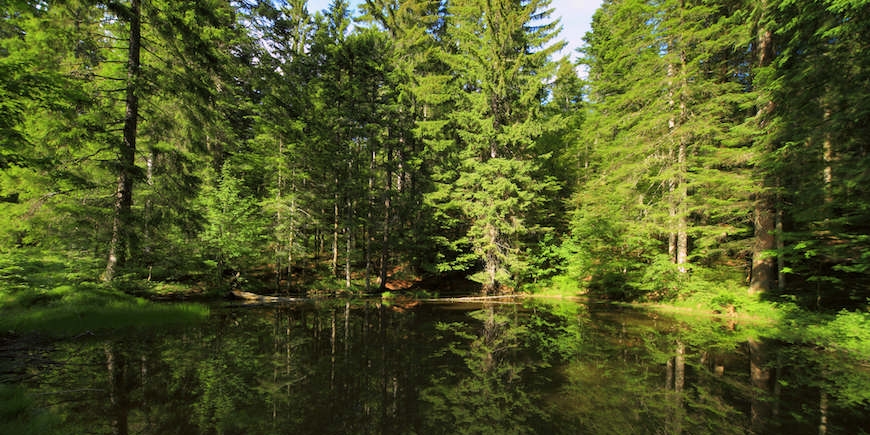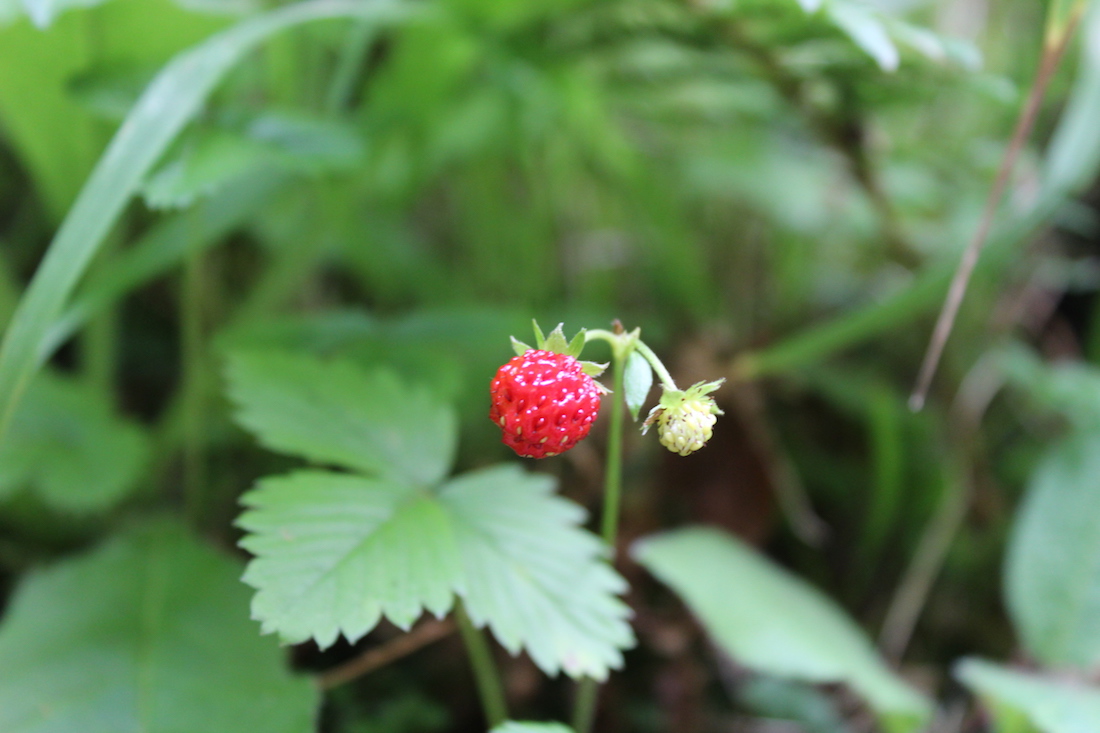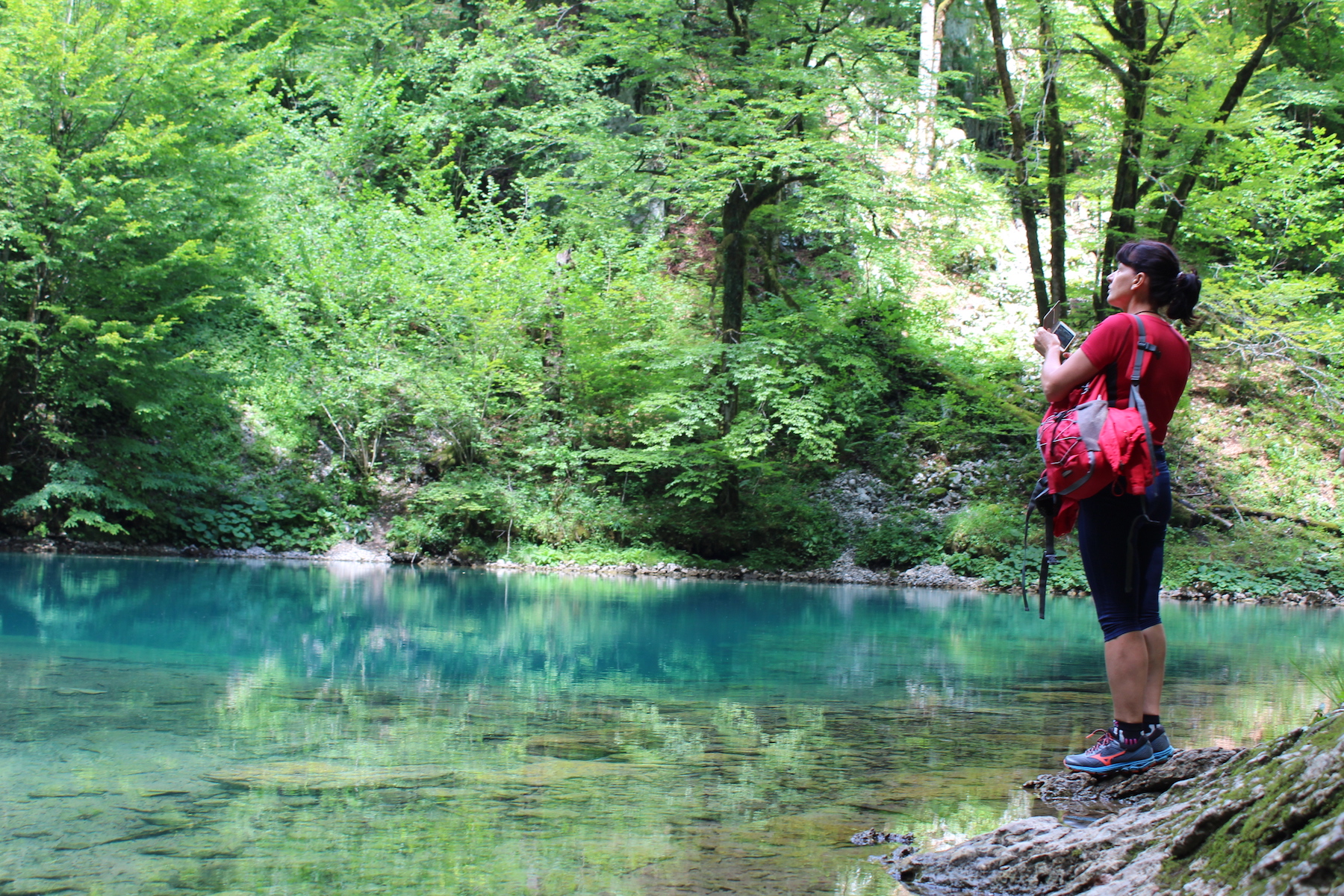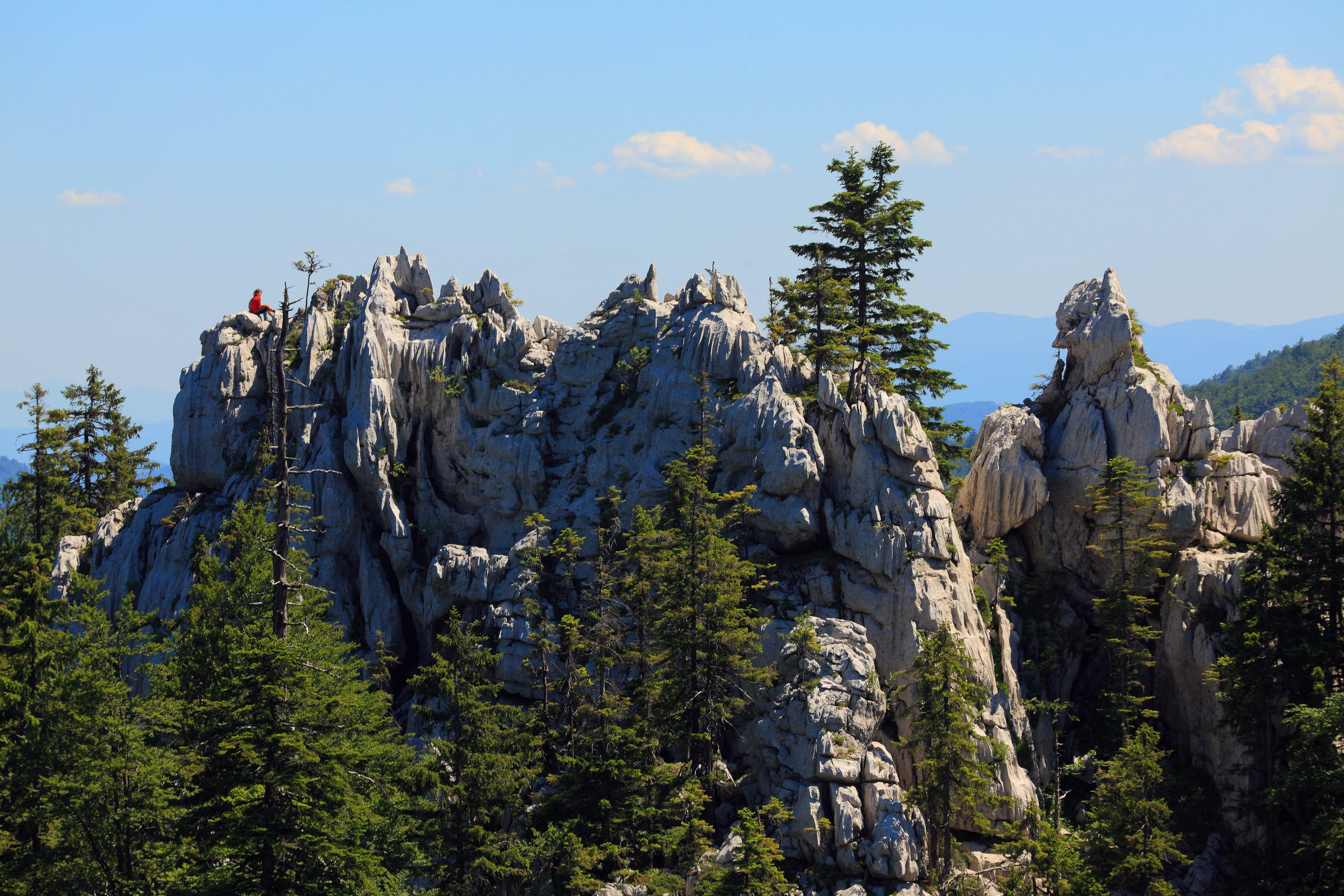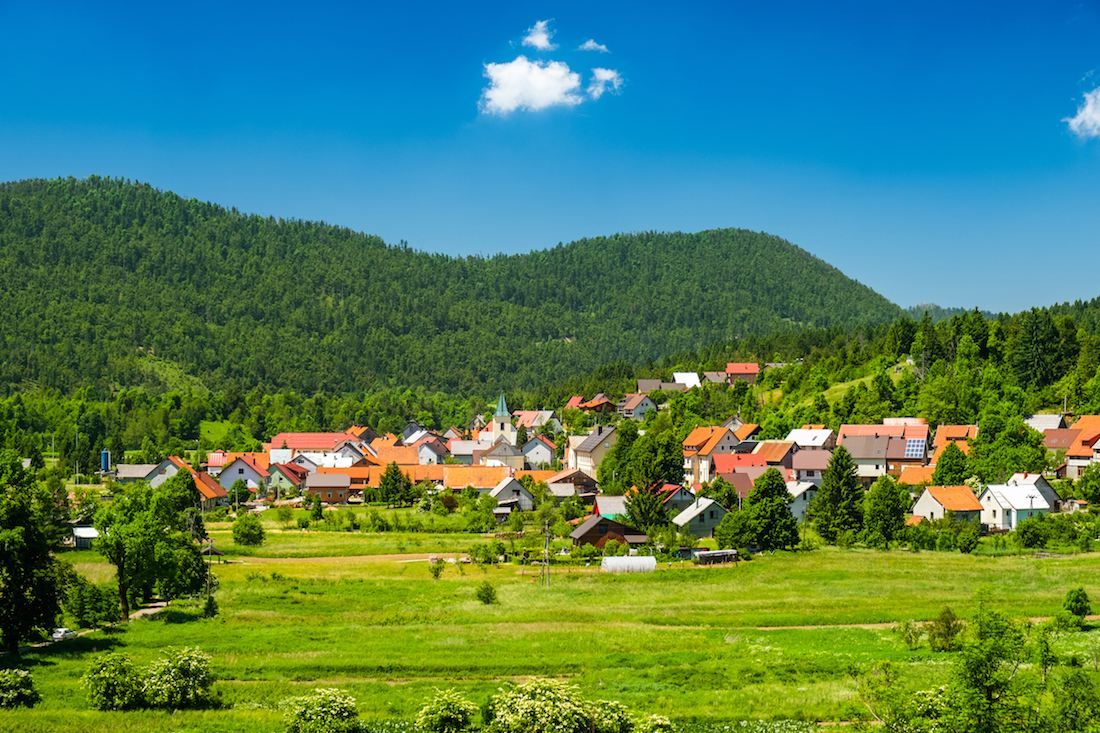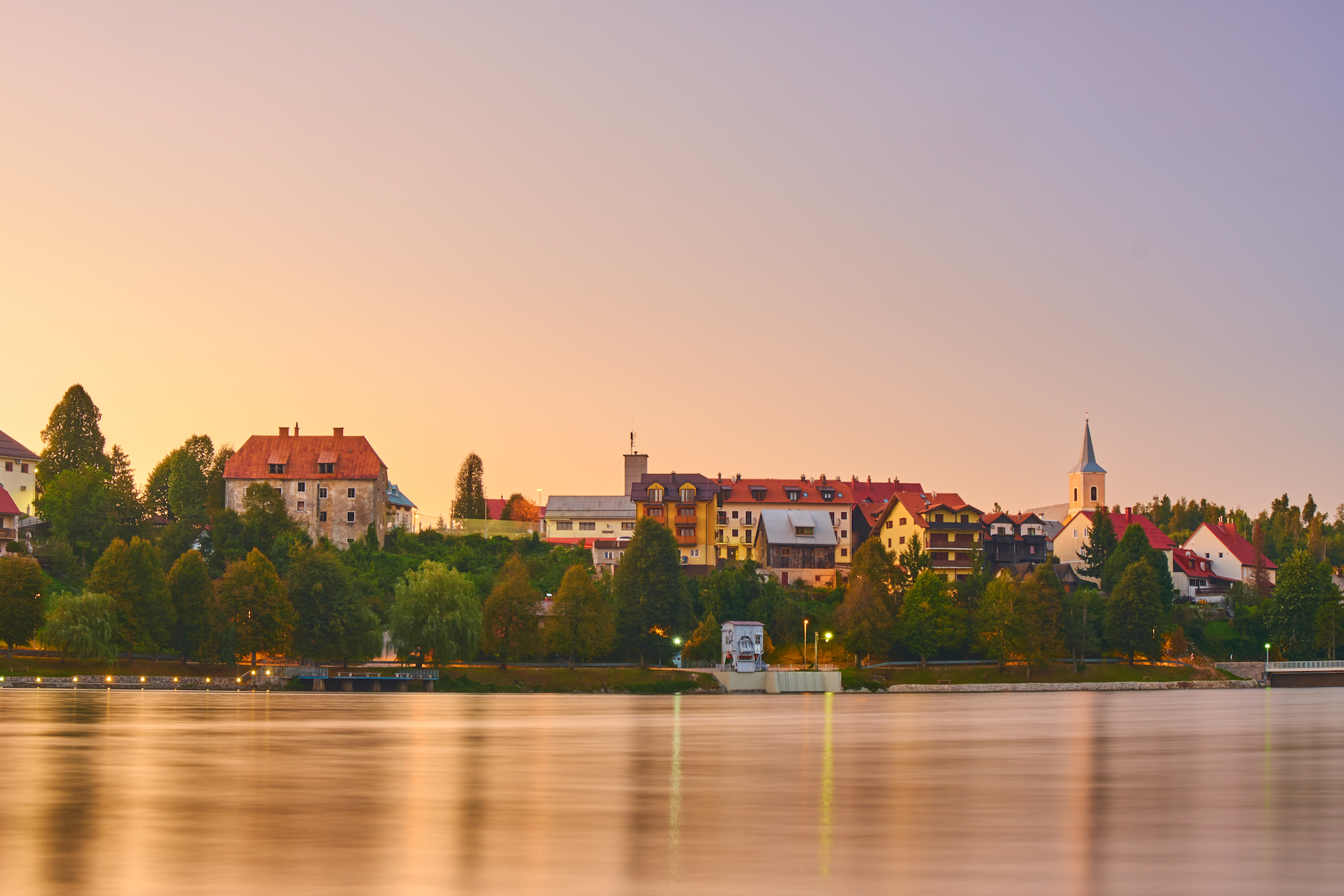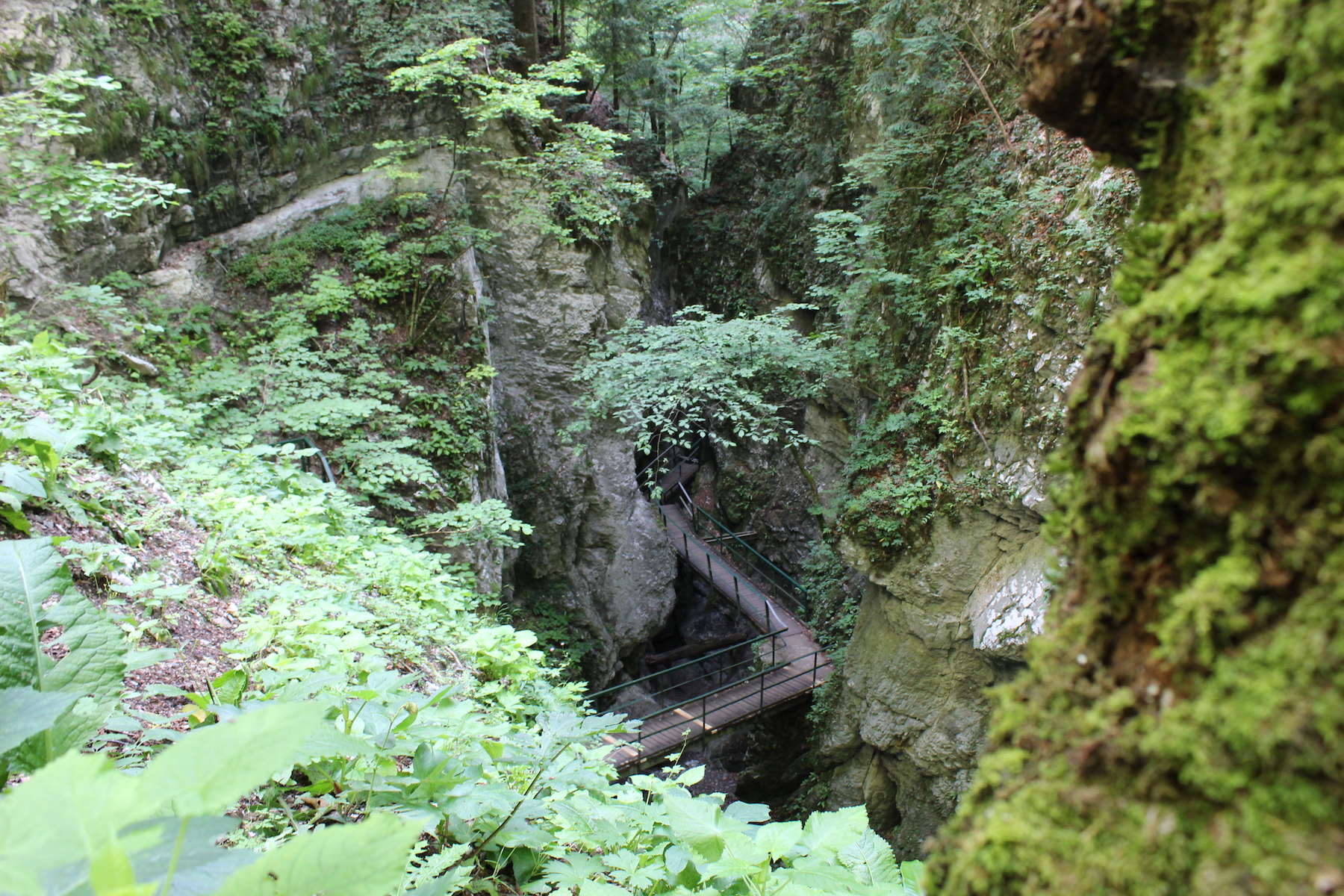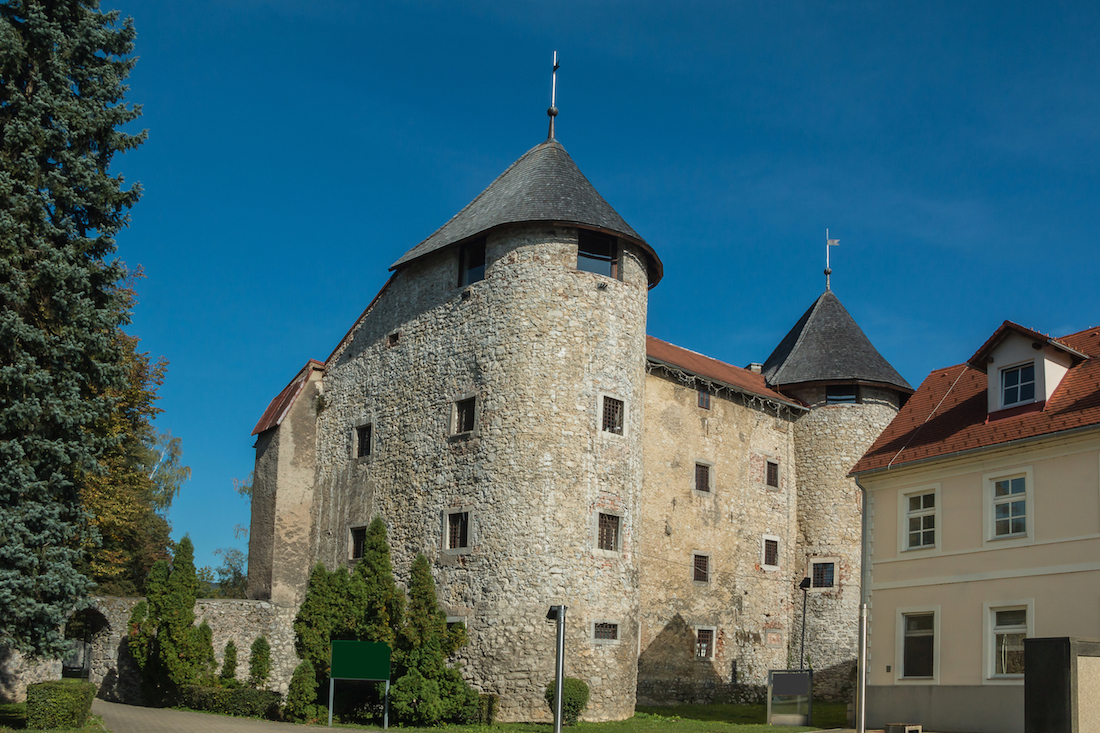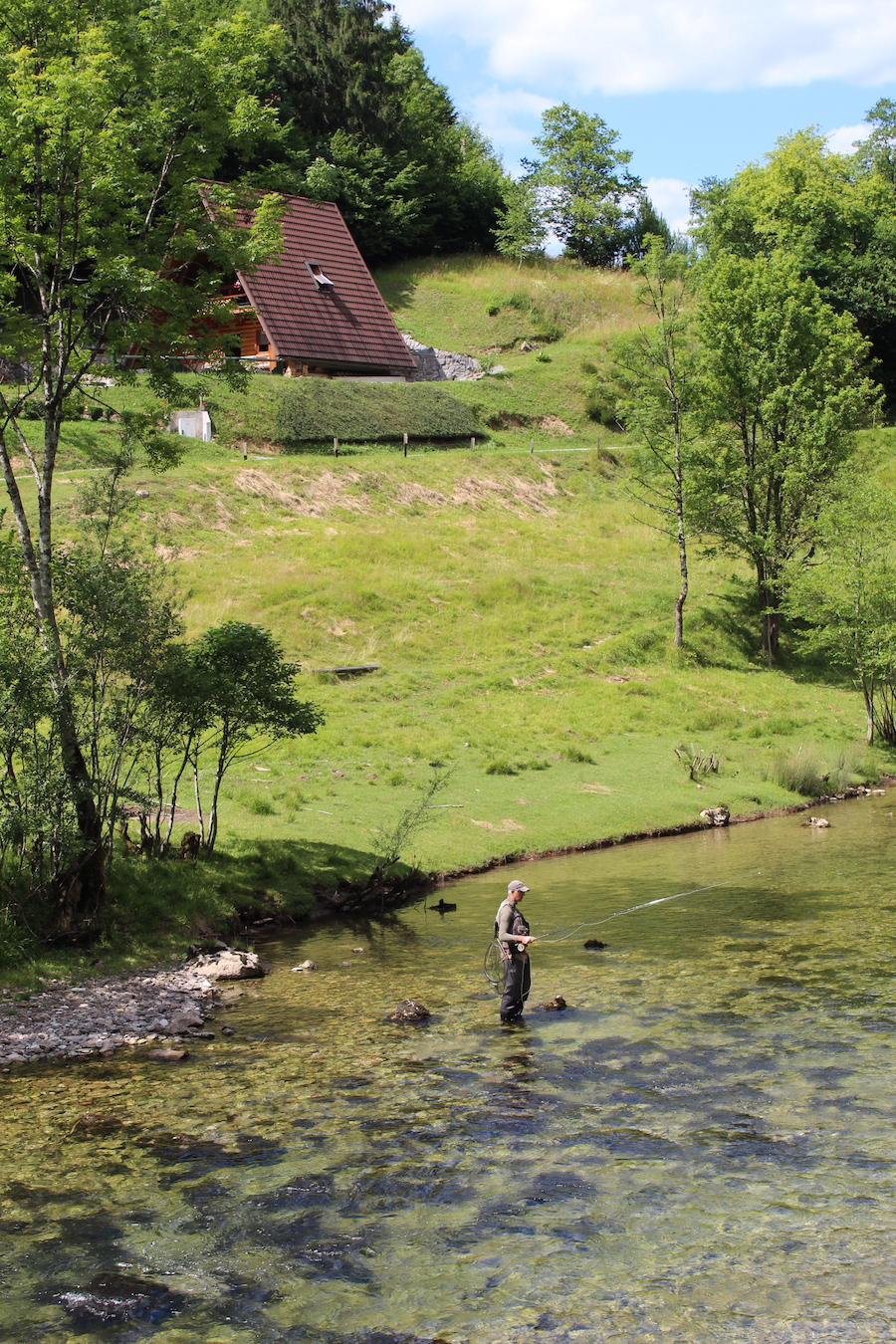Gorski Kotar – the Green oasis
If you are looking for off the beaten path places to visit that offers peace and tranquility in untouched nature, Gorski Kotar is the region for you. Nature lovers will appreciate this mountain laden kingdom with rocky peaks protruding from vast forests and with rare settlements throughout; where bears, wolves, and lynx call home.
Gorski Kotar is situated on the border with Slovenia on the route from Continental Croatia to the sea. Visitors can go from lying on a beach on the gorgeous Adriatic coast to enjoying forests and mountains, in just a short drive.
Gorski Kotar and its forests is where I go to recharge my batteries. When temperatures are striking hot in Dalmatia, there is no better escape during the summertime than to spend some time here and enjoy cooler nights. I am always amazed that, often, during the summer in Dalmatia, we need to turn our air conditioner on during the night thanks to the heat, while at the same time in Gorski Kotar, you can easily sleep covered with a warm blanket. I love that contrast found only a few hours from Split.
Summers are short, fresh and very pleasant for enjoying outdoor activities. The moisture level in this region is abundant due to its rich forests creating a frequent morning mist. And the special treats in the season are the wild berries: blackberries, raspberries, forest strawberries, which make hikes and bike rides extra special and often much longer than planned, due to “extra” stops to enjoy these natural treats.
9 places to see and visit in Gorski Kotar
To introduce you to this fantastic region, here is a list of 9 of my favorite places to see and visit. I should say: there are plenty of others worth visiting but the list would become too long if I were to include it all!
1. Risnjak National Park
Risnjak National Park may not be the top tourist destination in Croatia, but nonetheless, it is more than abundant when it comes to natural beauty. The Risnjak mountain massif was declared a national park in 1953, with its wide, heavily forested, karst plateau rising to jagged peaks. As it is only 15 kilometers away from the Adriatic sea, Risnjak is at the middle of influence between the coast and the continental part of the area, resulting in unique flora and fauna due to big climatic differences.
The major phenomenon of this national park is its forests. After the return of the lynx, Risnjak’s forests are once again home to all three large European carnivores: the wolf, bear and lynx, as well as different types of deer and smaller animals like weasels, badgers and many species of rodents. Birds belong to a special category, as Risnjak is well known as a haven for birdwatchers.
Did you know that ris in Croatian means lynx?
The stunning view from an elevation of 1,528 meters above sea level (Veliki Risnjak peak), Istria and the Julian Alps in neighboring Slovenia makes a lasting impression on every visitor. Risnjak presents a little piece of heaven, both for cyclists (MTB/Gravel) and hikers.
2. Emerald source of Kupa river
The source of the River Kupa in Risnjak National Park is one of the many unsolved karst riddles and one of the most abundant, spacious and deepest water springs in Croatia. The area was proclaimed a protected area in 1963.
At 313 meters above sea level, this karst source never dries out, and the water appears at the surface as a lake of an unreal bluegreen color in a deep gorge, surrounded by a forest and high rocks. From the source, the river flows over rapids towards a valley in which almost 500 species of butterflies have found their home, which is why it is known as the valley of butterflies. There are several hiking trails that will bring you to this magical spot, and it is definitely worth the visit.
3. Bijele & Samarske stijene – Strict Reserve
The rocks (stijene)of Bijele and Samarske are protected by the strictest regulations. In the reserve, everything is subordinated to the goal of preserving the unspoiled nature. Due to the natural wilderness and inaccessible karst terrain with its numerous sinkholes, rocks and stone towers, the area of Bijele stijene (White rocks) and Samarske stijene (Samarske rocks) is impassable off the marked trails. In fact, visitors are not even permitted to deviate from the trails. It is because of its wildness and inaccessibility that this areas pristine nature has been preserved, which leaves a deep impression on every visitor. Nature has created various karst forms here. The complex obtained its name because of the numerous vertical, white and sometimes 50 meters high rocks that rise from impassable holes and ravines with permanent snow in their depths.
There are virgin woods in the upper regions. Small and beautiful clearings among the rocks are similar to cauldrons and they are known as gardens due to their rich and interesting flora. Although it is difficult to pass through them, the Bijele stijene are wellknown to mountaineers, who visit here with pleasure because this natural karst workshop always offers visitors new experiences and new details.
The Samarske stijene are situated next to Bijele stijene. They consist of some 20 stone groups which protrude separately through the wooded cover. Being composed of limestone, these stone peaks are similar to largeheaded cones, cracked into layers.
4. Wildlife watching
Gorski Kotar is one of the areas where close encounters with wildlife are not a rare occasion. Watching bears and other forest animals like foxes, badgers, deer and roe deer provide an unforgettable experience for any animal lover and nature enthusiast. Watch and photograph brown bears in the wild from a cozy watchtower adapted for photographing bears and other wildlife. It is definitely an experience unique to Croatia’s Gorski Kotar region.
5. Delnice – highest town in Croatia
Delnice is the central largest town of Gorski Kotar mountain region and at an altitude of 730 meters, it is the highest situated town in Croatia. Delnice is a quiet town, home to about 5,000 people and away from the crowds, surrounded by the mountains and about 30 minutes away from the Adriatic Coast. The historical Louisiana road (Lujzijana) passes through Delnice, which is a great starting spot for cyclists and hikers who come to explore the region. There are several different trails from Delnice to Japlenški Vrh - a forest park located on the west side of Delnice from where you have a great view of the town. Biking trails and walking paths continue from central park into the forest. They are recognized and used by both professional MTB cyclists and those enjoying a recreational ride. On the northeast side of the Japlenški peak, there is an old 70meter ski jump hill landing at town stadium. Competitions were regularly held here between 1950-70. Petehovac is located in the southeast corner of Delnice and also provides amazing views of the town. During the winter months you can enjoy a small ski slope and a ski lift. Due to its exceptional and unspoiled natural beauty in 1963, this area was protected and declared a significant landscape.
6. Louisiana (Lujzijana) road
Louisiana is the most beautiful road leading to the most beautiful sea. The construction of the Road has set new trends in modern road construction; built in 1811, it was considered the most beautiful and modern mountain road in Europe at the time it was constructed. Louisiana was the main road connecting Central Europe and the Adriatic ports and an important road responsible for the livelihood of the small towns and villages along its route. The road connects Karlovac with Rijeka and was named after Maria Louisa, daughter of Austro-Hungarian emperor Francis II. All facilities, in terms of skill, have been executed masterly, applying an unprecedented method, particularly as it relates to the drywall arches overlooking the rocky precipices crossed by the road, the specific way of curves or turns, many big or small Gothic drywall bridges. This road deserves the admiration of both professional and ordinary passengers in whom it creates curiousness and astonishment. Today, this road represents the ideal choice for an easy, nostalgic journey through history, enjoying natural attractions and associating with the people living along the road.
7. Fužine
Fužine is the choice of lovers of nature and active vacations, and those who like to flee from overcrowded tourist spots in the summer but still want to enjoy easily accessible beaches (30 kilometers from the sea). The village itself is surrounded by picturesque mountains, the silence of centenary evergreen woods and the beauty of its lakes. Since its beginnings and still today, the area owes its development to the very favorable location near traffic routes; the area around Fužine is extremely rich in water and in fact, Fužine is a settlement with one of the highest annual rainfalls in Croatia. In order to capture and use this enormous amount of water, three accumulation lakes have been constructed in Fužine which are suitable for swimming, boat rides, canoeing, kayaking, and even windsurfing due to constant air currents. In the surrounding areas, you can find marked walking, trekking and cycling trails. You can also find horse riding activity in the area. Something completely unexpected is the cowboy village of Roswell, an original set where films about the legendary Chief Winnetou were made. It is a cowboy western town of Roswell with wellpreserved objects, an exhibition about making the movie, characters for visitors to take photos with and other amenities.
Fužine is also very famous for its gastronomic offer. Excellent restaurants provide a wide choice of indigenous, homemade dishes or dishes with mushrooms, game meat, and forest fruit prepared according to original recipes. One of the best known events in Fužine is an outdoor Farewell to the old year, every year on the 31st of December, precisely at noon.
8. Devil’s Passage and Green spring
Devil’s Passage (Vražji prolaz) is one of the most beautiful Croatian canyons full of wild beauty, where you can find lush forest vegetation, a waterfall, and a canyon through which water has made its path. Through a narrow gorge, among rocks about 100 meters high murmurs the mountain stream Jasle that dries up during summer. At the end of the Devil’s Passage, you will arrive in front of Muževa hižica, a little cave where the inhabitants of Skrad used to hide from Turks, a very long time ago. The cave is 200 meters long and it hides a small hall with a lake.
Green Spring is a small lake, dark green in color, carved in the cave and a spring of the river. A 70-meters-high waterfall pours down from just above the cave, and water from a small lake enters into an underground channel that brings the water up to the powerplant named “Munjara”. This was the first hydro poweredplant in Gorski Kotar, built in 1921. The plant is some 100 years old and part of its fascination is how it blends with nature. It has not been modernized and looks like an old house with retro-style machinery inside. Devil’s Passage, Green spring and cave Muežva hižica, were declared a special geo-morphological reserve and protected landscape in 1962. It is a relatively easy/moderate hike and the best time to visit is in the spring season, when there is abundance of water. And once you end your hike, you can stop by at the local mountain hut at the start/end of the trail for a delicious meal or wild berries strudel or pancakes.
9. Ogulin - the Homeland of Fairy tales
Located at the transition from Gorski Kotar into Lika, the town of Ogulin is in an area teeming with legends and folk traditions that have developed amid a strikingly beautiful naturally and historically challenging environment. It is a town of legends and fairy tales. In the center of the town there is Đula’s abyss, named after the legend of a young girl who threw herself into the abyss because of unrequited love. It was named after her and the rock formation above the abyss reflects the face of her beloved, who is still wondering where she might have disappeared.
Ogulin is famous for many things, such as being a birthplace to a wellknown Croatian fairy tale writer Ivana Brlić-Mažuranić (born in Ogulin in 1874). Ivana’s House of Fairy Tales is a unique multimedia and interactive visitor’s center which celebrates fairy tales and their makers.
Situated in the foot of mountain Klek (1,182 metres), known as a magical mountain which is a home to numerous local witch legends. Its 200-meter-high vertical rock face is the cradle of Croatian mountaineering and alpine climbing.
One of the legends noted by Valvasor comes from the 17th century – the legend about the witches of Klek. According to this legend, witches, fairies and elves from all around the world gather in Klek during stormy nights. As they dance there, their cries and screams can be heard even as far as Ogulin.
There are many legends in Ogulin: about Klek mountain (the sleeping giant), Klek cave and hidden gold, Mountain fairies but we will keep those for you to discover during your visit. And maybe learn how to ride a broom and get a driver’s license for it.
When you start feeling hungry from all the adventures and legends, the famous Ogulin sauerkraut will replenish all the necessary energy.
Once you visit all these amazing places, dont forget to taste some of the traditional local food, only the best and preferably homemade. There are plenty of restaurants to eat traditional game meat goulash or stew with polenta, homemade cottage cheese, roast potatoes and sauerkraut, smoked game, bear meat, mushrooms, strudel with wild berries, honey and medica (kind of brandy made with honey).


